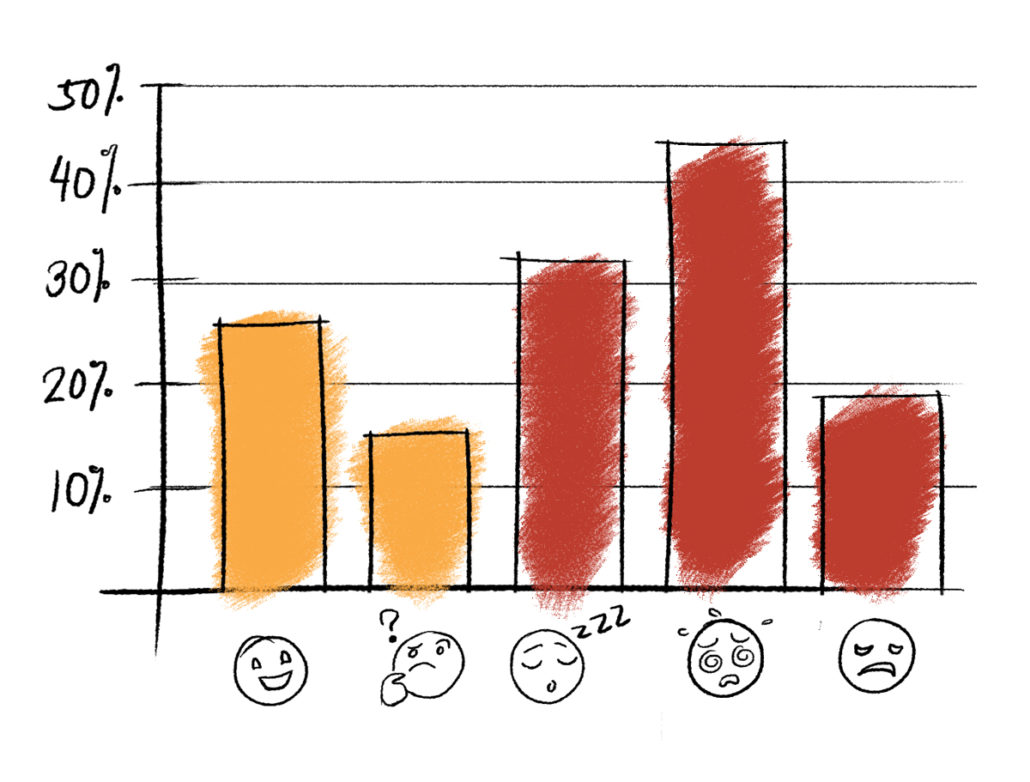“When one teaches, two learn.”
This quote, commonly attributed to science fiction writer Robert Heinlein, is a staple in teacher motivational posters. And rightfully so—they inspire teachers to become better. Whenever teachers also learn from their students, they are able to get to know the students better, they can make more sense and meaning out of the ideas they are teaching. Perhaps, they also learn something new about the world.
It is this dialogue, this two-way learning relationship, that also motivates us as teacher-educators. In our numerous Design Thinking workshops for teachers, not only do we teach, but we also learn. The discussions, activities, and worksheets are learning opportunities, not just for the participants, but for ourselves too.
Let us share with you some insights we have gained from a recent workshop: Design Thinking as a Teaching Strategy. We were curious about the teachers’ perceptions of Design Thinking, so we asked them to compare their current learning environments, with what a “Design Thinking environment” looks like. What are the students doing? What does the space look like? What is the teacher’s role? Teachers sketched these scenes in the worksheet provided. After performing contextual analysis of the 67 sketches, here’s what we learned:
Students were perceived as having more negative feelings towards learning
When we compared how students were depicted, we saw more negative feelings such as confused (43%), sleepy / tired (31%), and sad (19%). Positive feelings such as happy (27%) and curious (15%) were visualized less in the worksheets.
This seems like the Negativity Bias in effect, that says people tend to recall negative feelings more than positive ones. But we wonder, could this also be a reflection of how teachers feel about their students? What are the implications of negativity bias when empathizing with our students?
Technology defines this generation of students
In scenes of current learning environments, the second most apparent pattern (after confused students) was students depicted with some sort of technology tool. 4 out of 10 sketches showed students using smartphones, computers, games, and social media. Many sketches were neutral in nature, depicting technology as the norm for these students, while a few worksheets had clear opinions about technology being a nuisance or distraction. This is consistent with the common opinion we hear from teachers about students being “digital natives”, and a great starting point to encourage deeper empathy for our students. Before putting value judgments on the benefits or dangers of technology to our learners, we encourage teachers to take the student’s perspective. What exactly are they doing with these tools and platforms? Why do they continue using them? What value does it add to their lives? What learning experiences can they get from them?
The physical space defines our perception of what traditional learning is
Around 36% of sketches showed their physical spaces, which were all typical classroom setups: a blackboard, with tables and chairs all facing the front. Almost all sketches also included having a teacher in front, either doing a lecture or pointing to a concept. And when compared with the scenes of Design Thinking environments, this typical classroom setup was practically gone. Interesting. While the physical environment indeed influences the learning process, there seems to be a general idea that innovative teaching has to happen in a non-typical classroom setup. We wonder, is it necessary to transform the physical environment in order to effectively integrate Design Thinking in teaching? Is it possible to still have a traditional classroom and yet allow students to build prototypes and collaborate well?
Collaboration was the big take-away from the design thinking process
In the sketches depicting scenes of a Design Thinking environment, collaboration was the most apparent theme. 58% visualized students working together, in different forms. We compared it to sketches of current learning environments, where only 28% showed some sort of collaboration or group work. This holds true to what many students and teachers commonly share as the biggest pain point in classroom activities: group work. This shows that Design Thinking is primarily seen as a way to enhance collaboration among students.
Technology took a backseat in design thinking
Surprisingly, technology was almost absent in Design Thinking scenes, with a mere 3% of the sketches showing a technology tool or app. 16% had an element of nature (trees, outdoors, animals) while 22% depicted hands-on tools ranging from paper scissors to hammers. This was an interesting shift in teachers’ perspectives about innovation, which is that it isn’t purely reliant on technology itself. As an innovation process, Design Thinking is accessible. Of course technology tools can always enhance it, but students can still empathize and prototype even without access to the internet. That’s a powerful idea.
Design thinking was perceived as a mix of thinking and doing, less of feeling
We think of Design Thinking as a process that spans all domains: cognitive (thinking), psychomotor (doing), and affective (feeling). But based on the sketches from the worksheets, feeling was only visualized by 6% of the participants. Both thinking and doing were equally visible in the sketches at 39%. We can look at this data as feedback for our workshop design—are we undermining the affective side of design thinking? Should we provide more examples, or emphasize the importance of feelings, values, and empathy in learning through design thinking? Or perhaps, we can also look at this is as a reflection of how the affective domain is often overlooked by educators.
Final thoughts
These simple insights are mere snapshots of the wealth of stories that our teachers have. But we have learned a lot, which can inform our future workshops and projects. Through more inquiry and empathy, we can understand them deeper, and find more creative ways to support them in their day-to-day work.
By sharing this process of our reflection, we also invite more educators to engage in more two-way teaching and learning. You might be surprised with what you learn from your students. Take a moment to look at your student work, beyond the rubrics and scores and competencies. What are they trying to tell you? What do you wonder about? Share your learnings. Let’s become better teachers together.
Illustrations were from the recent Design Thinking as a Teaching Strategy workshop, last February 2020 at Diliman Preparatory School with 100 teachers. Photo composition and editing by Mitzi Bajet.









